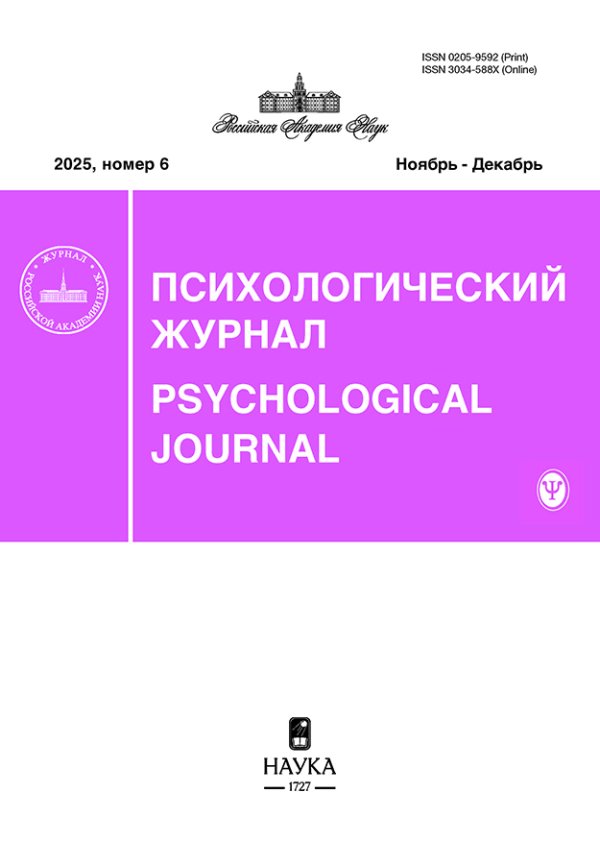Human-Horse Interactions in Hippovention: Ecopsychological Approach to Psyche Development
- Authors: Lopukhova O.G.1, Panov V.I.2,3
-
Affiliations:
- Kazan (Volga Region) Federal University
- Psychological Institution of Russian Academy of Education
- Issue: Vol 44, No 4 (2023)
- Pages: 27-37
- Section: Psychology of personality
- URL: https://journals.rcsi.science/0205-9592/article/view/141003
- DOI: https://doi.org/10.31857/S020595920027083-7
- ID: 141003
Cite item
Full Text
Abstract
About the authors
O. G. Lopukhova
Kazan (Volga Region) Federal UniversityRussian Federation, Kazan
V. I. Panov
Psychological Institution of Russian Academy of Education;Russian Federation, Moscow
References
- Газизов К.К., Лопухова О.Г. Ипповенция — психологическая коррекция и развитие личности с помощью лошади // Журнал “Иппотерапия”. Вестник Национальной федерации иппотерапии и адаптивного конного спорта. 2016. № 2 (4). С. 24–27.
- Дерябо С.Д. Антропоморфизация природных объектов // Психологический журнал. 1995. Т. 16. № 3. С. 61–69.
- Копытин А.И. Концептуальные основы эко-арт-терапии // Медицинская психология в России. 2019. T. 11. № 1. C. 4.
- Лопухова О.Г., Газизов К.К. Психотерапия и обучение с участием лошади: теория, практика и связь с экопсихологией // Экопоэзис: экогуманитарные теория и практика. 2020. T. 1. № 1. С. 67–78.
- Лопухова О.Г., Газизов К.К., Аболиц А.С. “Ипповенция” как реализация экопсихологического подхода в психотерапии и развитии личности // Экопсихологические исследования-6: экология детства и психология устойчивого развития: сборник научных статей / отв. ред. В.И. Панов. М.: ФГБНУ “Психологический институт РАО”; Курск: Университетская книга, 2020. С. 146–150.
- Лошадь в психотерапии, иппотерапии и лечебной педагогике. Учебные материалы и исследования немецкого кураториума по терапевтической групповой езде. Пер с нем. В трех частях. Ч. 2. М.: Конноспортивный клуб инвалидов. 2003.
- Любимов Ф.А. Зоопсихология как основа обучения лошади. М.: ГорКа, 2005.
- Никольская А.В., Костригин А.А. Эффективность использования анималотерапии в когнитивно-поведенческой терапии: психотерапевтические кейсы // Консультативная психология и психотерапия. 2019. Т. 27. № 4. С. 149–164.
- Никольская А.В., Панов В.И. Возможность конструктивного конфликта в межвидовой группе “человек – домашнее животное” // Психология конструктивной конфликтности личности / Под ред. А.В. Карпова, М.М. Кашапова. Ярославль: Канцлер, 2013. С. 84–111.
- Панов В.И. Экопсихология: Парадигмальный поиск. М.; СПб.: Психологический институт РАО; Нестор-История, 2014.
- Панов В.И. Коммуникативные взаимодействия в межвидовой группе “человек – домашнее животное” в контексте экопсихологических типов взаимодействий // Теоретическая и экспериментальная психология. 2016. T. 9. № 1. С. 60–70.
- Панов В.И. Экопсихология развития: гносеологическая и онтологическая парадигмы // Познание и переживание. 2020. Т. 1. № 1. С. 38–54.
- Рабаданова Р.С., Новиков А.В., Виноградова М.К., Слабкая Д.Н. Ипповенция как действенный практический метод психолого-педагогического воздействия в современном обществе // Психология. Историко-критические обзоры и современные исследования. 2022. Т. 11. № 2 А. С. 317–324.
- Bachi K., Terkel J., Teichman M. Equine-facilitated psychotherapy for at-risk adolescents: The influence on self-image, self-control and trust // Clinical Child Psychology and Psychiatry. 2012. V. 17. № 2. P. 298–312.
- Bareiss H.-J. Therapeutische Mensch-Pferd-Interaktion (TMPI). Grundzuege eines ganzheitlichen und mehrdimensionalen Strukturmodells. // Praxis der Psychomotorik: Zeitschrift für Bewegungs und Entwicklungsförderung. 1996. V. 21. № 2. Р. 93–98.
- Birke L. Talking about horses: control and freedom in the world of “natural horsemanship” // Society and Animals. 2008. № 16. P. 107–126.
- Blake H.N. Talking with horses: A study of communication between man and horse. London: Souvenir Press. 1975.
- Brandt C. Equine-facilitated psychotherapy as a complementary treatment intervention // The Practitioner Scholar: Journal of Counseling and Professional Psychology. 2013. V. 2. № 1. P. 23–42.
- Chardonnens E. The use of animals as co-therapists on a farm: The child-horse bond in person-centered equine-assisted psychotherapy // Person-Centered and Experiential Psychotherapies. 2009. № 8. P. 319–332.
- De Jaegher H., Froese T. On the role of social interaction in individual agency // Adaptive Behavior. 2009. V. 17. № 5. P. 444–460.
- Lac V. Horsing around: gestalt equine psychotherapy as humanistic play therapy // Journal of Humanistic Psychology. 2016. V. 56. № 2. P. 194–209.
- Lac V. Amy’s story: an existential-integrative equine-facilitated psychotherapy approach to anorexia nervosa // Journal of Humanistic Psychology. 2017. V. 57. № 3. P. 301–312.
- Lentini J.A., Knox M.A. Qualitative and quantitative review of equine facilitated psychotherapy (EFP) with children and adolescents // The Open Complementary Medicine Journal. 2009. V. 1. № 1. P. 51–57.
- Lopukhova O.G. Correction of parent-child relationship through Equine assisted learning “Control and Тrust” // The European Proceedings of Social & Behavioural Sciences (IFTE 2017 - III International Forum on Teacher Education). 2017. P. 485–493.
- Kemp K., et al. Equine facilitated therapy with children and adolescents who have been sexually abused: A program evaluation study // Journal of child and family studies. 2014. V. 23. № 3. P. 558–566.
- Kern-Godal A., Arnevik E. More than just a break from treatment: How substance use disorder patients experience the stable environment in horse-assisted therapy // Substance Abuse: Research and Treatment. 2016. № 10. P. 99–108.
- Kirby M. Gestalt equine psychotherapy // Gestalt journal of Australia and New Zealand. 2010. V. 6. № 2. P. 60–68.
- Trotter K.S., Chandler C.K., Goodwin-Bond D., Casey J. A comparative study of the efficacy of group equine assisted counseling with at-risk children and adolescents // Journal of creativity in mental health and social care in the community. 2008. V. 3. № 3. P. 254–284.
Supplementary files










